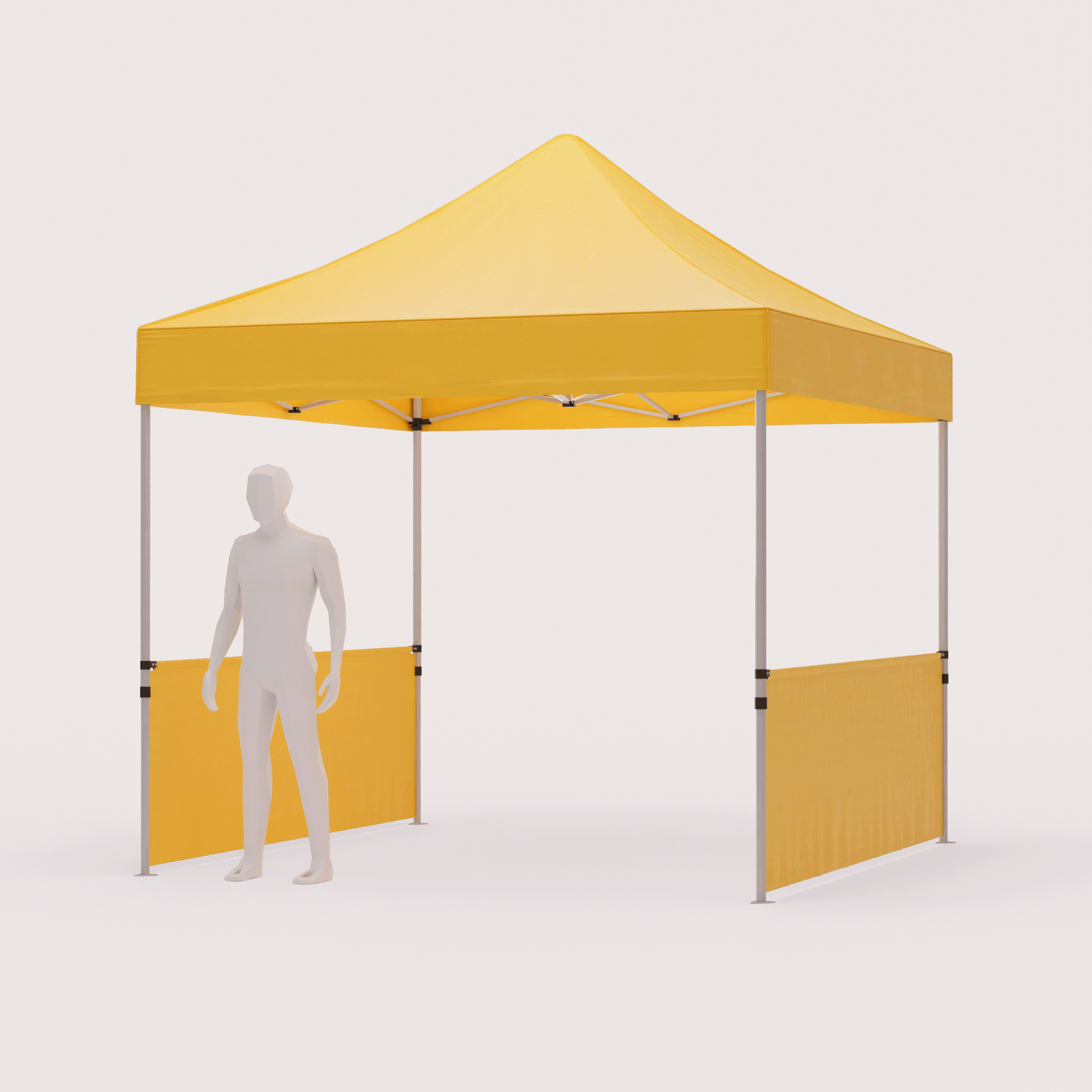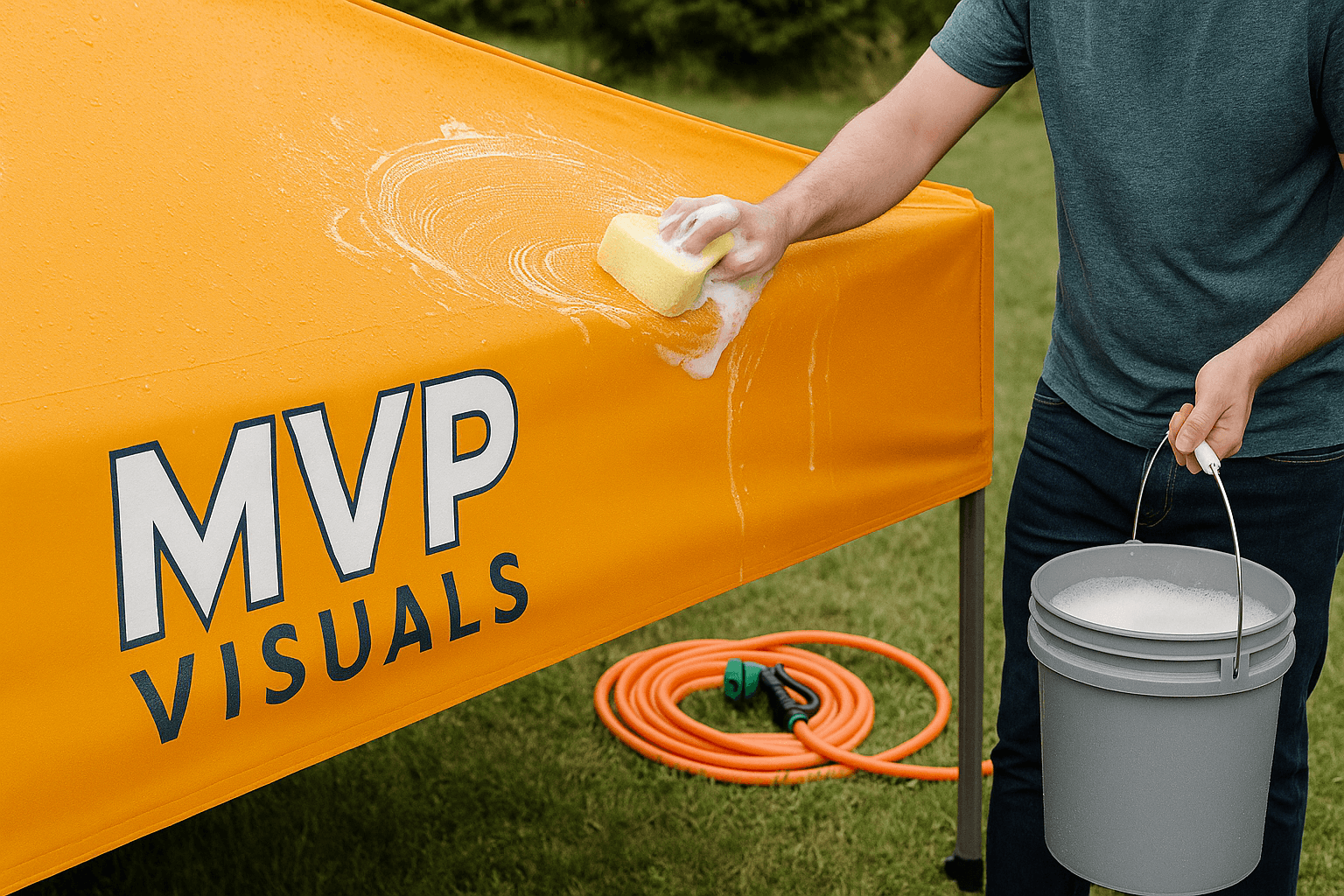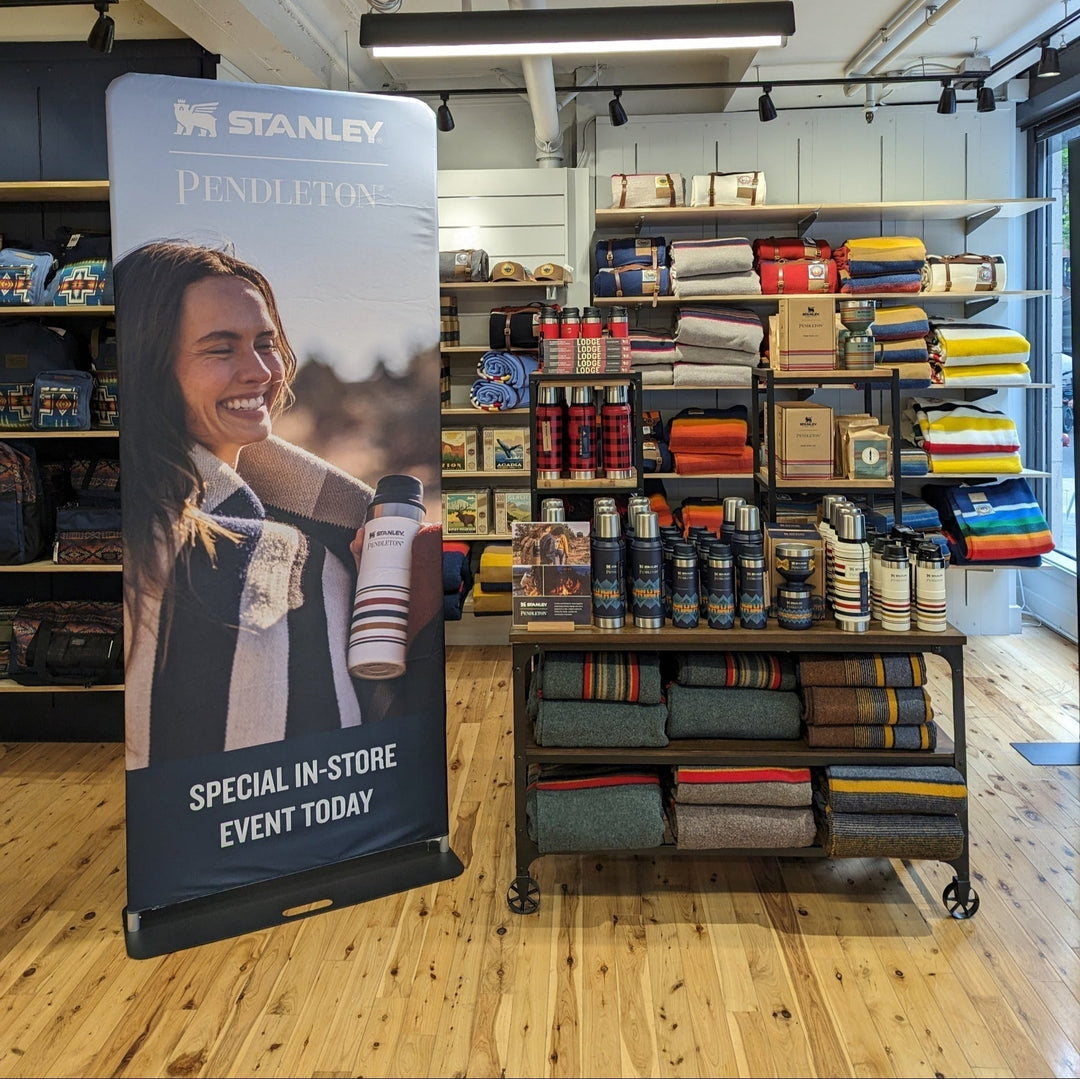Your branded canopy’s looking rough. Streaks. Mud. Maybe a bold pigeon used it as a bathroom during load-out.
Time to get it clean without turning the fabric into a faded, brittle mess.
Here’s the thing about polyester denier: it’s tough, but it’s not invincible. It’s coated to repel water, resist UV, and hold vibrant color - and that coating is exactly what you don’t want to mess with. Harsh cleaners? Bad idea. High-pressure hoses? Also no. Heat, bleach, stiff bristles? All of it can break down the fabric or wreck the print finish.
Cleaning it properly means working with the fabric, not against it. That means low-pressure water, mild soap, a soft brush, and patience. Let it dry fully, and store it dry. That’s it. It’s a little fussy, but for good reason. This is the part of your setup that holds your brand in 10 square feet of weather-resistant glory.
Here’s how to clean your canopy top:
We’ll break down every step, and show you how to deal with mildew, sap, stains, and whatever the birds left behind.
Polyester Denier 101: What You’re Cleaning
Most commercial canopies - including MVP’s - use polyester denier. It’s a synthetic fabric coated to repel water, block UV, and hold printed graphics.
That coating is what does the heavy lifting. Damage it, and you lose waterproofing, color protection, and overall fabric integrity.
Here’s what to avoid like the plague:
-
Bleach (it eats the coating alive)
-
Harsh solvents or degreasers
-
High heat. That means no dryers, no steam
-
Pressure washers (unless you like shredded seams)
-
Anything with stiff, scratchy bristles
Stick to mild soap, soft tools, and common sense. This fabric's durable, but only if you meet it halfway.
What You’ll Need
Before you start, grab the right tools. You don’t need anything fancy. Just the basics that won’t damage the fabric:
-
Bucket of water + mild soap: Dish soap works fine. Just avoid anything with bleach or degreasers.
-
Soft brush or sponge: Think gentle, not gritty. You want to lift the dirt, not grind it in.
-
Garden hose: A regular spray nozzle is perfect. Skip the pressure washer — too much force can tear seams or strip the coating.
-
Clean towel or microfiber cloth: For drying up puddles or blotting problem spots.
-
Optional: mildew treatment: For those “I left it folded up after a rainy event” moments. Spot treat only, and test it first.
Step-by-Step: How to Clean Your Canopy Like a Pro

1. Lay it flat in a shaded area
Work on a clean, shaded surface to keep soap from drying too fast and leaving streaks. You can leave the canopy on the frame if it’s stable, or lay it flat on the ground.
If your only option is grass, that’s fine. Just lay down a tarp first to keep clippings and pollen from sticking to the wet fabric.
2. Remove loose debris
Use a soft-bristle brush or hose to knock off dust, leaves, and dry dirt. Always do this before adding water. Wetting the canopy first just turns loose debris into a smeary mess that’s harder to clean.
3. Apply soapy water
Mix mild dish soap with cold or lukewarm water. Use a sponge or soft brush to apply the soapy water, working in manageable sections.
Hot water isn’t necessary and can wear down the coating over time. Don’t let the soap dry out while you work. Apply, scrub, rinse, move on.
4. Scrub gently
Focus on the trouble spots: edges, corners, seams, or any visible stains. Gentle pressure is enough.Let the soap lift the dirt. Scrubbing too hard will wear through the coating or dull your print, especially along stitched areas.
5. Rinse thoroughly
Use a garden hose with moderate pressure. Rinse until no soap remains, especially along seams where it tends to pool. Leftover soap leaves streaks and attracts dirt the next time you set up.
6. Let it dry completely
Fully dry means fully dry. Leave it on the frame or hang it somewhere with airflow. Even a little moisture can lead to mildew or staining in storage. If you’re not sure, wait longer.
Spot Treatment: Stains, Mold, and Grime
Some marks won’t come off with a basic soap-and-water wash: mildew, tree sap, set-in grime. Spot treatment can handle these, but only if you’re using fabric-safe methods.
-
Mild dish soap + soft brush is still your first move, even for stains.
-
Diluted white vinegar (1 part vinegar to 4 parts water) can help with mildew — but only on plain polyester areas, never on printed graphics.
-
Canopy-specific mildew removers are an option, but test first in an inconspicuous spot. Stick to products labeled safe for polyester or tent fabric.
Mildew often shows up as small dark spots. Dab with your cleaning mix using a sponge or cloth. Avoid scrubbing printed areas directly. Let the solution sit for a few minutes, then rinse thoroughly and air dry. If it’s still there, repeat the process. Don’t reach for harsher chemicals.
Wrapping It Up
Soap, water, and patience. That’s what keeps a good canopy looking like it belongs at a real event.
And hey, if yours is too far gone (we’ve seen some things), replacing a canopy top is easier than you think. Reach out to get a quote and we’ll help you find the right replacement; no bots, just a real person who knows this stuff.
But if it’s just dirty? Now you know exactly what to do.

10x10 Branded Canopy Tent
Unlimited Customization | Starting at $969
Order Canopy Tent with Your Logo



